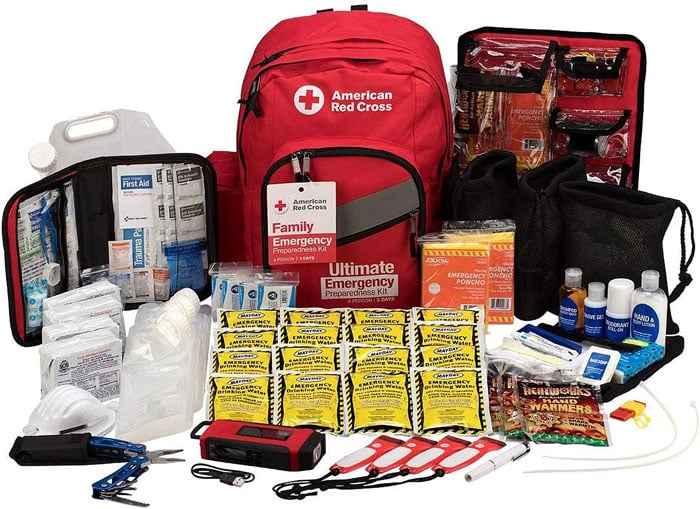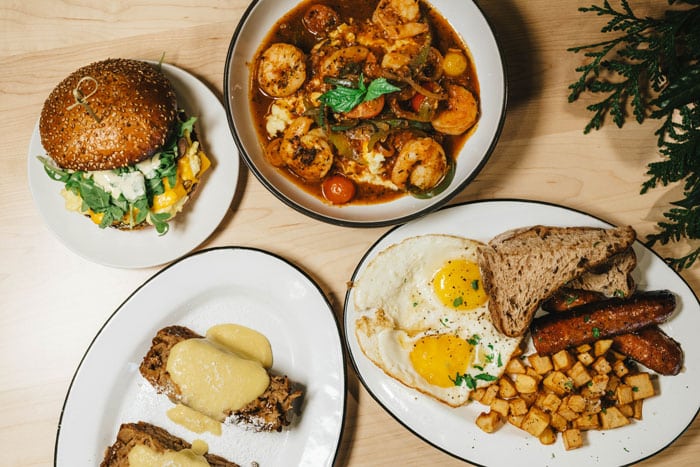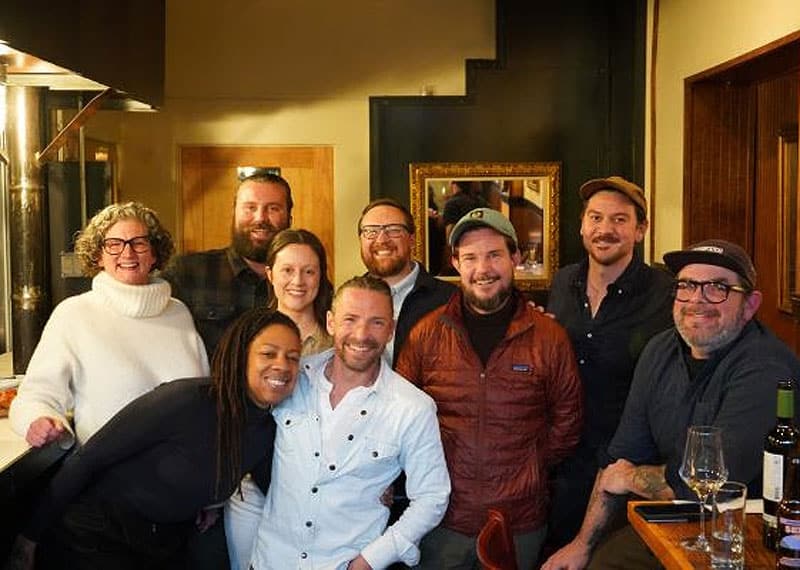A Personal Journey
Some of you know I’ve lived through three disasters prior to Hurricane Helene. The first was a salt water flood when I was in my 20’s, single, and living in a beach community between two bodies of sea water. Salt water’s a whole different kind of flooding because it’s so corrosive. Then two pretty major earth quakes with Bill and our three kids in the northeast.
The second earth quake took out all communications, like Hurricane Helene did. Communications weren’t only out for the general population, they were out for ALL emergency services. Luckily, one of our elementary school teachers was an enthusiast, had all the equipment, and taught ham radio classes. Our school became emergency services headquarters. That quake also took down lots and lots of trees. We had over sixty huge 80-100+ foot evergreens, mostly Douglas Firs and Bigleaf Maples down across the roads within a few blocks of our house.
After that, I did an extremely deep dive into emergency preparedness best practices. It’s been a long time since I put together supplies for two adults and five young children, so some things have probably changed or been improved.
I’m definitely NOT an expert, but here’s an overview of what I put together for our family:
Emergency Supplies
There are lots of options when it comes to emergency supplies. Red Cross, Amazon and lots of other companies have good options. I used American Red Cross pre-packed backpacks and then added to them.
- Supply Location: First, I chose a location in the house that was easily accessible and most likely accessible if the house came down in an earthquake – our front hall coat closet. We didn’t have a suitable outdoor location, or I would have stored them there.
- Supply Storage & Access: Packed most of our supplies into two 55 gallon plastic trash cans with lids and wheels. Each trash can had an inventory of contentes printed and weatherproofed on top. One held camping gear: sleeping bags, ground cloth, tent, camp stove, extra fuel canisters, flint fire starters, emergency radio, and more. The other held: first aid supplies, pain killers, extra clothes, hats, glasses/sunglasses, flash lights, whistles, bug spray, feminine supplies, prescription medications, freeze dried and dehydrated meals from REI, powdered milk, energy bars, and more.
- Prepackaged Supply Backpacks: The American Red Cross sells pre-packed Emergency Preparedness Packs and Kits (https://www.redcross.org/store/emergency-preparedness) for various numbers of people and days. You can find them on Amazon (officially licensed), as well as the Red Cross website. Sometimes a 10% or similar discount pops up on the Red Cross website.
- Supply Placement: Bill was at work and I was home with kids when the big quake hit, so we were separated for quite a while as he tried to get home. Because of that, I purchased a one-person backpack for Bill’s car and office (https://www.amazon.com/dp/B0CKXVR4B7), and a four-person backpack for my car (https://www.amazon.com/American-Red-Cross-Officially-Preparedness/dp/B0CKXXFRYK).
- Supplementing Pre-packaged Supplies: I supplemented each survival backpack with tools (crowbar, saw, hammer, screw driver set, jumper cables, flares, bungee cords, rope, etc). Anything I thought might be useful. Some of that also fit in the Red Cross backpack.
- Drinking Water: The Red Cross packaged drinking water has a 5 year shelf life. Bottled water purchased in the store doesn’t go bad, but it can start to taste like dust after a year if not stored properly or for too long. There can be other issues. I’ll leave it up to you to do your own research on this one. You can also purchase emergency drinking water pouches in quantity.
- Communication: We had walkie talkies with a 5 mile range. Used them on the ski slopes and during other outdoor activities to keep in touch with all the kids. After losing all communication for multiple days after the big quake, I considered getting a Ham Radio license and set up for a broader, out of disaster area, reach. It’s a process, and no one in either of our families was interested, so I let it go.
Lessons Learned
- What Personal Items to Take? Update 1/13/2025: When asked, I always say, imagine your house is on fire. What are the first 5 things you’ll grab? Then think about the next 5. Make a list, because you never know what you’ll do in a crisis. If possible, always keep those things in the same, easily accessable place.
- Emergency Supplies: There are lots of options when it comes to emergency supplies. Red Cross, Amazon and lots of other companies have good options. Figure out what you need and which supplier puts those together best.
- Generator: Critical if you’re on a well! If you’re planning on getting a generator, consider a “Standby Generator” that connects directly to a Natural Gas line. Many use natural gas and/or propane. They turn on and off automatically, whether you’re home or not, so no worrying about a power outage when you’re not home. And no finding a place to store a portable generator and gas to power it safely, as well as rolling it out, hooking it up, and keeping the tank full every time the power goes out. Remember gas station pumps run on electricity, so don’t work when the power’s out.
- No Generator: Before we had a generator we’d do a few things you might already do, but I’m going to mention it here anyway. Before disaster strikes, always keep gallon jugs (milk jugs) of water into your freezer. They’ll keep things cold for a while when the power’s out. As they melt, move one or two into your refrigerator to keep those things cool. You can also drink the melted water if needed. If you have plenty of warning, fill your bathtubs with water for flushing and to drink.
- Transportation: As a general rule, don’t let your vehicle get lower than ¼ tank at any point. More is better. Sometimes disasters happen with little or no warning.
- Cash on Hand: Don’t rely on credit cards alone. Cash is King when power grids & machines get dinged! Keep some cash on you and some in your house. If you’re worried about cash at home, get a fire/water proof safe that you can tuck away somewhere and bolt to the floor. During WNC’s recent Hurricane Helene disaster, banks were closed and retail (restaurants, shops) credit card systems were down, so “cash only” for an extended period of time. Everyone headed to ATMs, which quickly ran out of cash.
- Food Supply: Keep your pantry stocked. Don’t have much room for extra food? Maybe keep a couple boxes of non-perishables in your garage or a closet. Grocery stores had no power and were closed for days after Hurricane Helene. Without free meals served up by volunteers, churches, World Central Kitchen, and others, a LOT of people would have gone hungry.
- Cooktop: Choose a gas cooktop if possible. Natural Gas works when the power’s out. You just need to turn a burner on and light it with a lighter or match. Burners can be turned on for heat, also, if you have no other heat source.
- Wood Stove: We learned firsthand how critical it is to have a heat source during a disaster. That is why we will always have a wood stove. A wood stove (or fireplace insert) that has a top area big enough to cook on, as we did during previous disasters.
- Central Meetup Place: It might sound a little over the top, but we used to have a central meetup place in the country set for our family in case some crazy nation-wide disaster happened. If that did happen and there was no way to communicate, we’d all try to get to that place. We let that slide over time, but with so many people stranded and isolated for weeks or more after Helene, we’ll be setting a new meetup place.
One Last Thing
Now that Bill and I have experienced total, multiday loss of ALL communication – again, and our children & other family are scattered across the country, I’m researching hand-held radios and walkie-talkies that don’t require an operator’s license, contract, have nationwide coverage, and won’t break the bank. Multiple people in our family will have one.
*If I missed anything, I’ll update this post.



